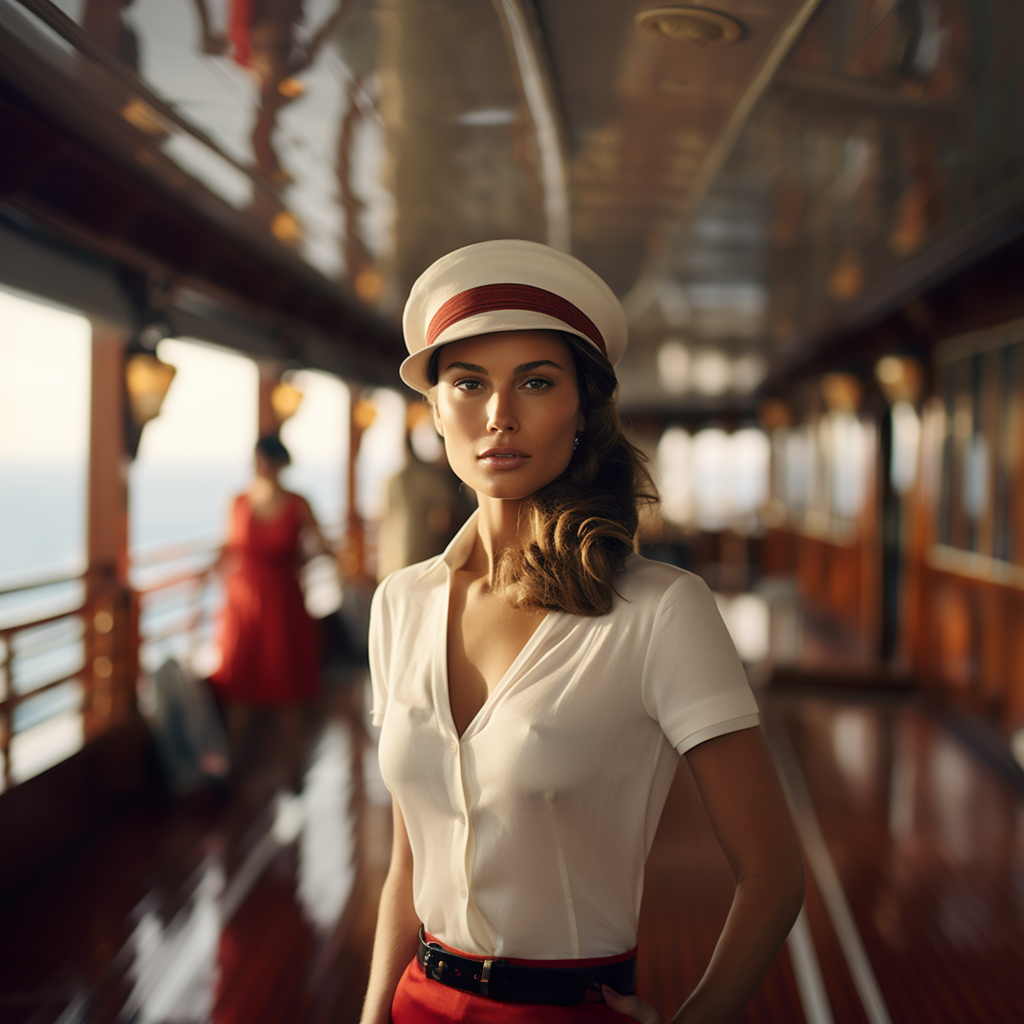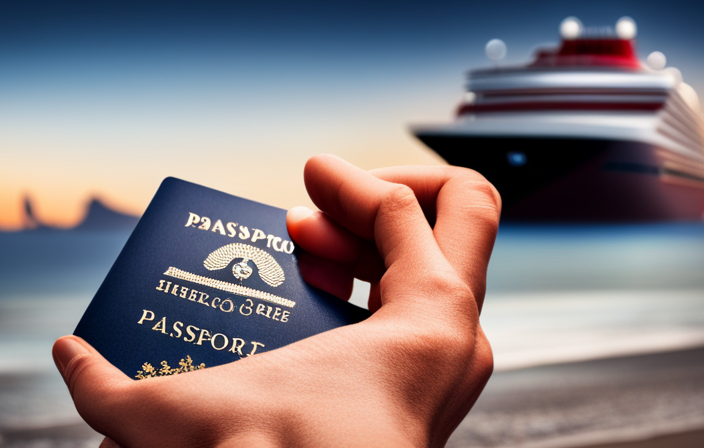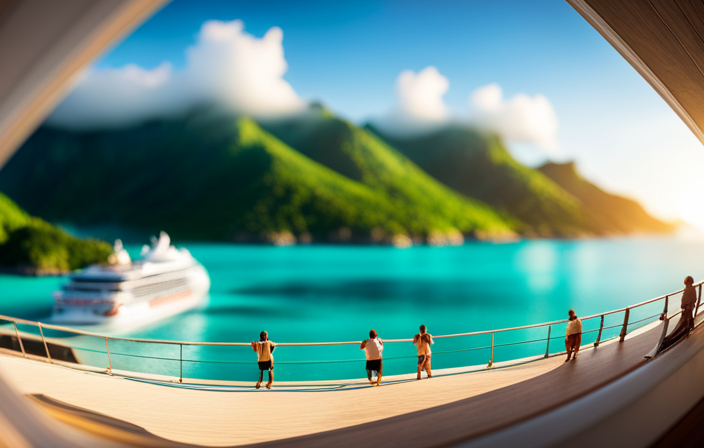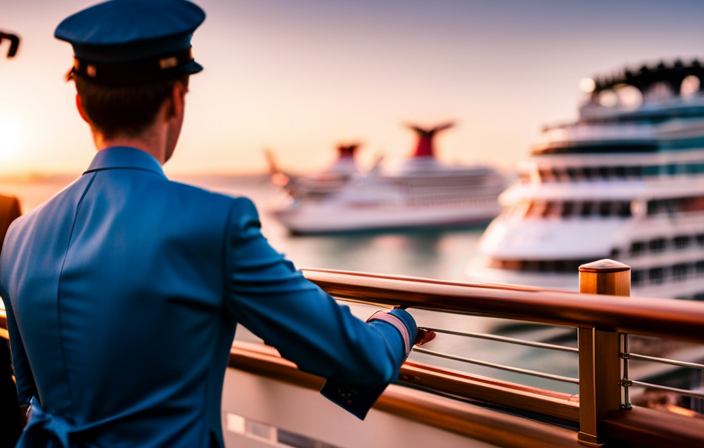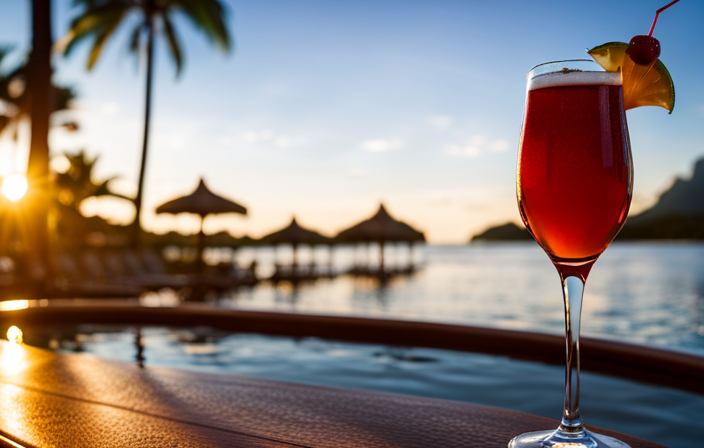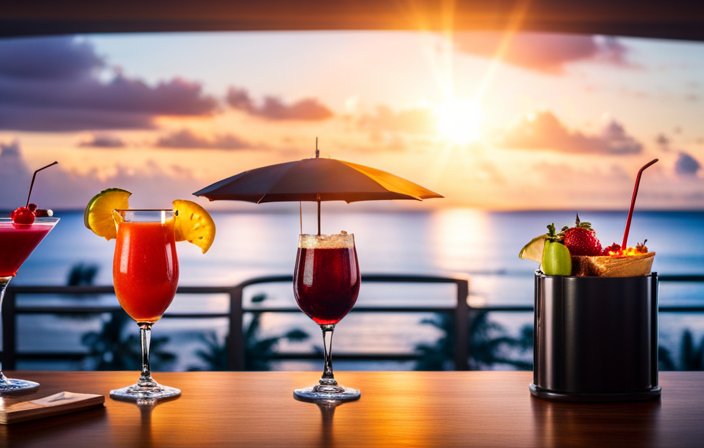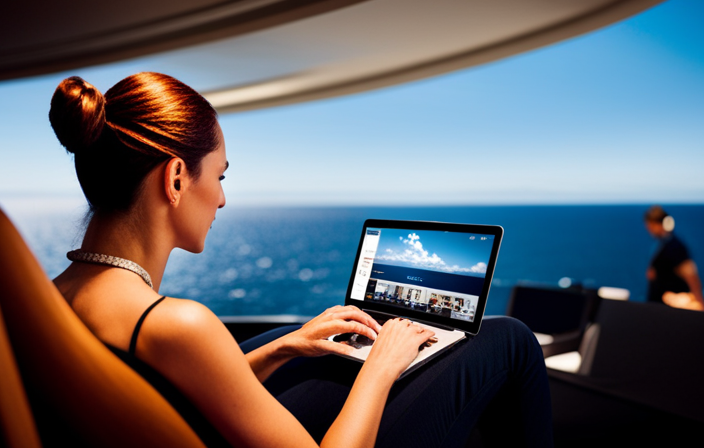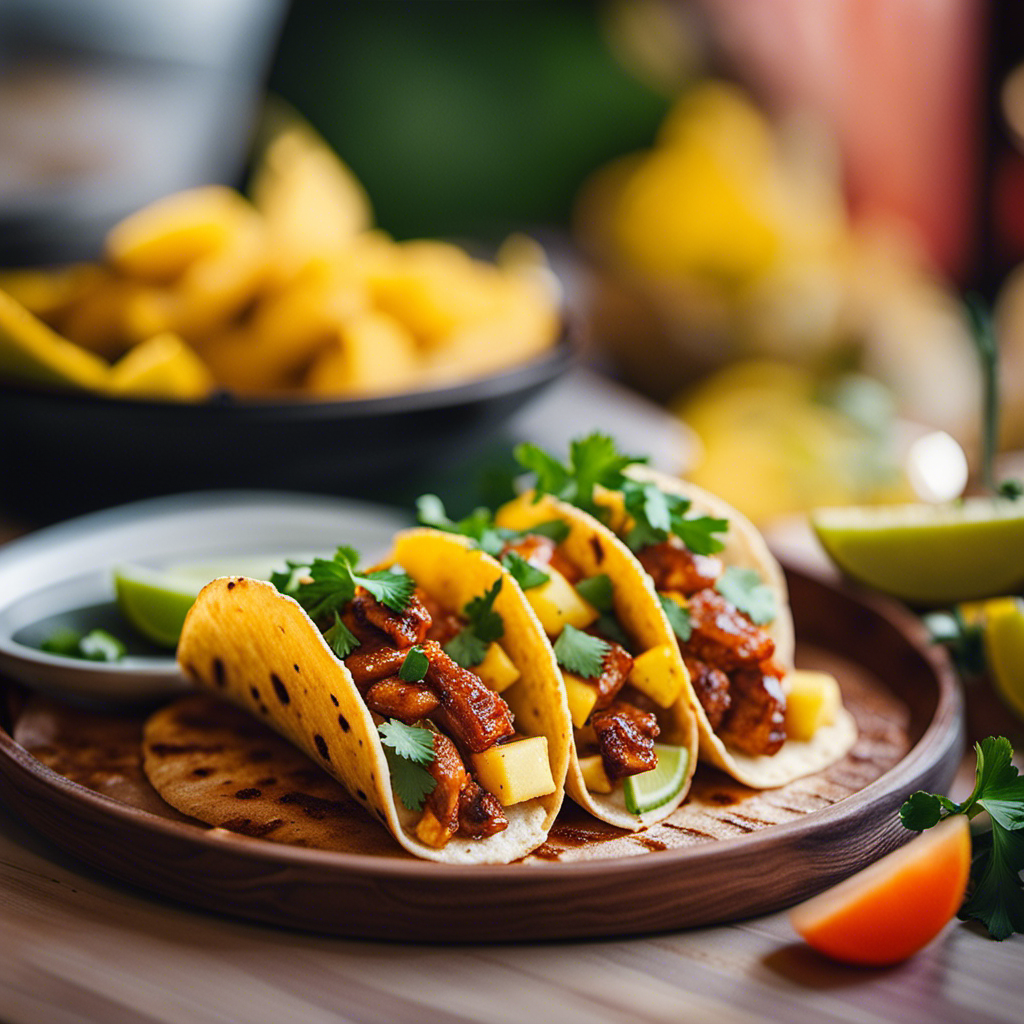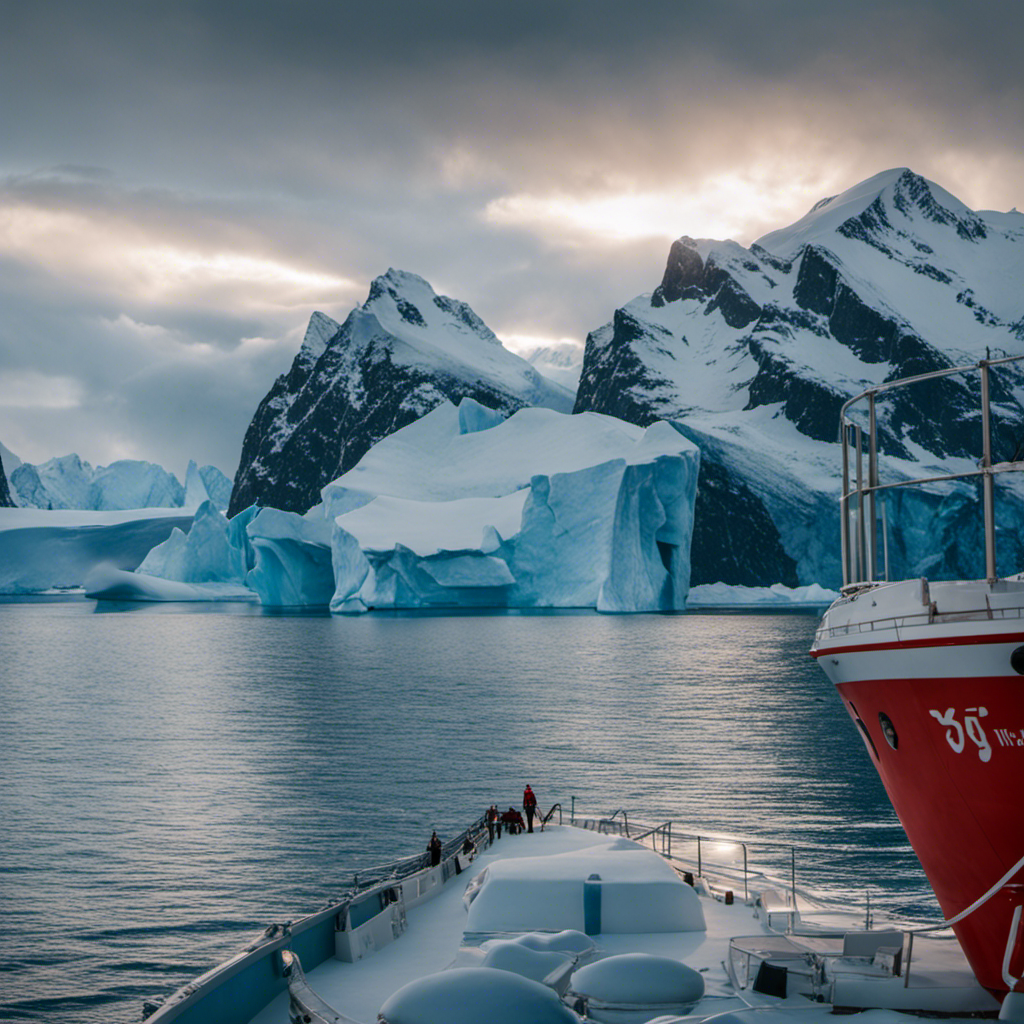Cruise Destinations
Willemstad’s Colorful Architecture and Must-See Attractions
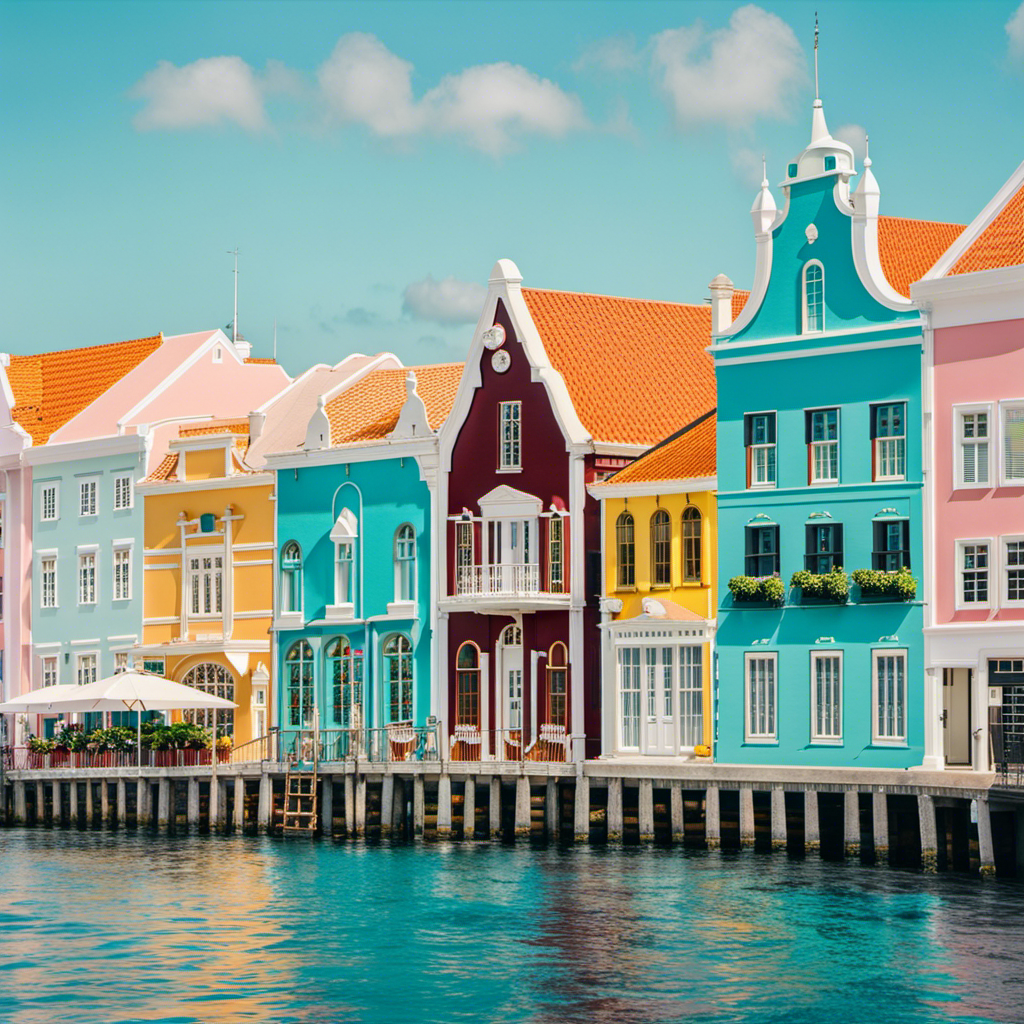
As I stroll along the charming streets of Willemstad, I’m completely mesmerized by the unique Dutch-style architecture that surrounds me. The vibrant Caribbean colors create a breathtaking scene that beautifully merges aesthetic appeal with historical depth, transporting me to another time.
It’s fascinating to learn that these pastel-hued buildings were originally painted to ease the migraines of the governor.
From the UNESCO World Heritage Site in the historic center to the best-preserved fort on the island, Willemstad is a treasure trove of must-see attractions.
And let’s not forget the iconic Queen Emma Bridge, a swinging old lady that connects Punda and Otrabanda.
There’s so much to explore in this captivating city.
Key Takeaways
- Willemstad’s architecture is unique and combines Dutch-style with Caribbean colors.
- The buildings in Willemstad are painted in pastel hues to accommodate the governor’s migraines.
- The city’s historic center is a UNESCO World Heritage Site due to its architectural significance.
- Must-see attractions in Willemstad include Fort Amsterdam, Queen Emma Bridge, Mikve Israel-Emanuel Synagogue, and Kura Hulanda Anthropological Museum.
Unique Dutch-Style Architecture With Caribbean Colors
I love how the unique Dutch-style architecture in Willemstad combines with vibrant Caribbean colors to create a visually stunning cityscape.
The buildings in Willemstad are a beautiful blend of Caribbean and European influences. The pastel hues that adorn the buildings were actually chosen to help alleviate the migraines of the island’s governor.
As I walk through the historic center of Willemstad, a UNESCO World Heritage Site, I am mesmerized by the row of delicately-colored buildings with their red tile roofs. It’s fascinating to see how the traditional Dutch styles have been modified to accommodate the Caribbean climate.
The preservation efforts in Willemstad are commendable, as these architectural gems have stood the test of time. It’s truly a treat for the eyes to witness the fusion of Caribbean architectural influences with the Dutch-style buildings in Willemstad.
Buildings Painted in Pastel Hues Due to Governor’s Migraines
Walking through the historic center of Willemstad, it’s fascinating to learn that the buildings are painted in pastel hues to alleviate the governor’s migraines. This influence of the governor’s migraines on Willemstad’s architecture is not only interesting, but also adds a unique charm to the city’s aesthetic.
The importance of the pastel hues in the city’s aesthetic cannot be overstated. As I stroll along the streets, I can’t help but feel a sense of tranquility and calmness wash over me. The delicate colors create a soothing atmosphere, making it a pleasure to explore the city.
The row of delicately-colored buildings with red tile roofs is truly a sight to behold. It’s no wonder that the historic center of Willemstad is a UNESCO World Heritage Site.
Row of Delicately-Colored Buildings With Red Tile Roofs
As I admire the row of delicately-colored buildings with red tile roofs, the unique blend of Dutch-style architecture and Caribbean colors comes to life. Each building stands proudly, showcasing a vibrant color palette that reflects the rich history and cultural diversity of Willemstad.
The use of color symbolism in Willemstad’s architecture is evident, with each hue conveying a specific meaning. The influence of Caribbean culture on the design of the buildings is apparent in the use of bright and lively colors, which are reminiscent of the vibrant landscapes and the joyful spirit of the Caribbean.
The red tile roofs add a touch of warmth and charm to the buildings, creating a harmonious visual composition. It is truly a feast for the eyes, and a testament to the creativity and ingenuity of the architects who designed these magnificent structures.
Historic Center of Willemstad Is a UNESCO World Heritage Site
Exploring the historic center of Willemstad, it is clear why it has been designated as a UNESCO World Heritage Site. The vibrant streets are lined with buildings that showcase a unique blend of Caribbean and Dutch style architecture. The pastel hued buildings, a result of the governor’s migraines, create a picturesque scene that is truly captivating.
As I wandered through the historic center, I couldn’t help but be in awe of the iconic landmarks that define this part of Willemstad. The imposing Fort Amsterdam, with its well-preserved walls and a cannon ball fired by Captain Bligh’s troops, stands as a testament to the island’s history.
The Queen Emma Bridge, affectionately known as the ‘Swinging Old Lady of Curacao’, connects Punda and Otrabanda, offering breathtaking views of the bay. The Mikve Israel Emanuel Synagogue, the oldest continually used synagogue in the Western Hemisphere, is a cultural and historical gem, featuring stunning stained glass windows and a carved mahogany ark.
And for those seeking a deeper understanding of the island’s history, the Kura Hulanda Anthropological Museum chronicles the origins of man and the African slave trade. Finally, a visit to the Curacao Ostrich Farm, with its safari truck tour and opportunity to hand-feed ostriches, provides a unique and memorable experience.
Traditional Dutch Styles Modified to Accommodate the Caribbean Climate
I marveled at how the traditional Dutch architectural styles had been cleverly adapted to suit the climate of the Caribbean. The impact of the climate on architecture was evident in the vibrant and colorful buildings of Willemstad. The buildings, painted in pastel hues, were not only a visual delight but also had a practical purpose. Legend has it that the governor suffered from migraines and ordered the buildings to be painted in soothing colors. The result was a row of delicately-colored buildings with red tile roofs, creating a unique and picturesque sight. These architectural adaptations not only added charm to the city but also helped to combat the intense heat and strong tropical winds. The traditional Dutch styles had been modified to incorporate features such as shaded balconies, high ceilings, and cross-ventilation, allowing for a more comfortable living environment in the Caribbean climate.
| Dutch Architecture Adaptations | Impact of Climate on Architecture |
|---|---|
| Shaded Balconies | Protection from the intense heat |
| High Ceilings | Improved airflow and ventilation |
| Cross-Ventilation | Cooling effect in the tropical winds |
| Red Tile Roofs | Reflect and dissipate sunlight |
| Pastel Hues | Soothing colors for a visually pleasing environment |
Fort Amsterdam: Built in 1635 to Protect the Island From Threats
After learning about the traditional Dutch architectural styles modified for the Caribbean climate, let’s now delve into the historical significance and architectural features of Fort Amsterdam.
Built in 1635 to protect the island from threats, Fort Amsterdam is the best-preserved fort on Curacao. It not only served as a defense stronghold but also housed the governor of Curacao. As I wandered through its sturdy walls, I couldn’t help but marvel at its grandeur.
The architectural features, such as the red tile roofs and the imposing cannons, spoke volumes about its rich history. One notable artifact within the fort is a cannonball fired by Captain Bligh’s troops.
No wonder Fort Amsterdam has been listed as a UNESCO World Heritage Site, as it stands as a testament to the island’s past and serves as a reminder of its resilience.
Best Preserved Fort on the Island
Walking through the sturdy walls of Fort Amsterdam, one can’t help but be amazed by its impeccable preservation and historical significance. This fort, built in 1635 to protect the island from threats, is the best preserved fort on the island of Curacao. As the former home of the governor, it holds a special place in the island’s history. Inside the fort, you can see a cannon ball fired by Captain Bligh’s troops, a reminder of the fort’s defensive purpose. Designated as a World Heritage Site, Fort Amsterdam showcases the architectural and historical significance of Curacao. It stands as a testament to the island’s past and offers visitors a glimpse into the rich history of this Caribbean gem.
| Best Preserved Fort | Historical Significance |
|---|---|
| Impeccable preservation | Protection from threats |
| Governor’s former home | Cannon ball fired by Captain Bligh’s troops |
| World Heritage Site | Architectural significance |
| Glimpse into history | Rich historical past |
Home of the Governor of Curacao
The home of the governor of Curacao, Fort Amsterdam, is a significant historical site that showcases the island’s rich past and architectural significance.
As I stood before the impressive fortress, I couldn’t help but feel a sense of awe. This majestic structure, built in 1635 to protect the island from threats, has stood the test of time and remains the best-preserved fort on the island.
It is not only the governor’s residence but also a symbol of the island’s historical significance. Walking through its sturdy stone walls, I could imagine the stories and secrets that were held within its walls.
From the cannon ball fired by Captain Bligh’s troops to being listed as a World Heritage Site, Fort Amsterdam is a testament to Curacao’s vibrant history.
Includes a Cannon Ball Fired by Captain Bligh’s Troops
I marveled at the cannonball fired by Captain Bligh’s troops, a powerful reminder of the fort’s defensive history.
Located in Willemstad, Fort Amsterdam holds immense historical importance. Built in 1635 to protect the island from threats, it is the best preserved fort on the island and serves as the residence of the Governor of Curacao. Standing tall and majestic, it has been listed as a UNESCO World Heritage Site.
The cannonball itself holds significant significance. It represents the fort’s role in defending the island against potential invasions and attacks. As I gazed at the cannonball, I couldn’t help but imagine the battles that took place here centuries ago. It is a tangible connection to the past, reminding us of the fort’s vital role in Curacao’s history.
Queen Emma Bridge: Floating Bridge That Connects Punda and Otrabanda
Connected by a floating bridge, Queen Emma Bridge links the vibrant neighborhoods of Punda and Otrabanda in Willemstad. This iconic landmark is affectionately known as the ‘Swinging Old Lady of Curacao.’
As I walk across the bridge, I can feel it gently swaying beneath my feet, allowing vessels to enter and leave the bay. The bridge is a sight to behold, with its unique design and vibrant colors. The bridge is a pedestrian bridge, consisting of 16 pontoons that keep it afloat. It is truly a marvel of engineering.
As I make my way from Punda to Otrabanda, I can’t help but admire the stunning views of the city and the sparkling blue waters below. Queen Emma Bridge is not just a means of transportation, but a symbol of connection and unity in Willemstad.
Frequently Asked Questions
How Did the Governor’s Migraines Lead to Buildings Being Painted in Pastel Hues in Willemstad?
The governor’s migraines led to buildings in Willemstad being painted in pastel hues. The significance of these colors in the architecture is that they create a unique and vibrant atmosphere, reflecting the Caribbean spirit of the city.
What Is the Significance of the Red Tile Roofs on the Row of Delicately-Colored Buildings in Willemstad?
The red tile roofs on the row of delicately-colored buildings in Willemstad symbolize the fusion of Dutch and Caribbean cultures. They are culturally significant as they represent the architectural blend and vibrant heritage of the city.
What Are Some Other UNESCO World Heritage Sites in Willemstad, Aside From the Historic Center?
There is more to Willemstad than its colorful architecture. Aside from the historic center, there are other UNESCO World Heritage sites in Willemstad that hold great historical significance.
How Were Traditional Dutch Architectural Styles Modified to Accommodate the Caribbean Climate in Willemstad?
Traditional Dutch architectural styles were modified in Willemstad to accommodate the Caribbean climate. The adaptations included incorporating elements like large windows for ventilation, high ceilings for airflow, and shaded verandas to provide relief from the tropical heat.
Are There Any Other Notable Attractions or Landmarks Near the Queen Emma Bridge in Willemstad?
Yes, there are notable attractions near the Queen Emma Bridge in Willemstad. One of them is the floating market, where you can find fresh produce and local goods. Another is the Mikvé Israel Emanuel Synagogue, the oldest synagogue in the Western Hemisphere.
Meet Asra, a talented and adventurous writer who infuses her passion for exploration into every word she writes. Asra’s love for storytelling and her insatiable curiosity about the world make her an invaluable asset to the Voyager Info team.
From a young age, Asra was drawn to the power of words and their ability to transport readers to far-off lands and magical realms. Her fascination with travel and cultures from around the globe fueled her desire to become a travel writer, and she set out on a journey to turn her dreams into reality.
Cruise Destinations
Royal Caribbean’s Loyalty Program: Levels And Perks Revealed!
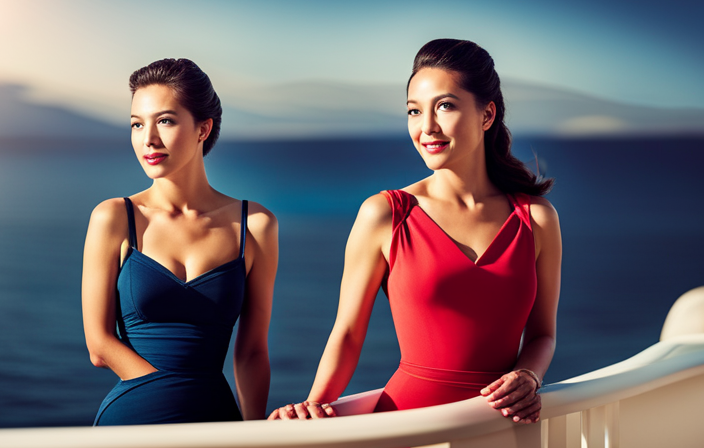
Hello, cruise fans! I am here to provide information about the Crown and Anchor Society loyalty program offered by Royal Caribbean. This program is designed to reward your passion for cruising with fantastic perks at every tier!
Now, let’s talk tiers. We start off with the Gold level, where you’ll enjoy benefits like exclusive events and discounts.
As you sail more, you’ll move up to Platinum, where you’ll score a complimentary photo, free laundry, and even get to chat with the Diamond Plus Pinnacle Club Call Center staff members.
But hold on tight, because the top tier is where the real magic happens. The Pinnacle Club is the crème de la crème. Think complimentary drinks, discounted beverage packages, access to specialty restaurants, and unlimited internet. It’s like sailing in first-class all the way!
Oh, and did I mention the family benefits? Your kids under 18 get to share in the perks too, with discounted ice cream and arcade credits. Now that’s what I call family fun!
So, hop aboard and let’s uncover all the levels and perks of Royal Caribbean’s loyalty program together. Trust me, you won’t want to miss out on this voyage of rewards!
Key Takeaways
- Royal Caribbean’s Crown and Anchor Society loyalty program has multiple levels that are reached based on a points system.
- Platinum tier is reached at thirty cruise points and offers perks such as complimentary photos, laundry services, and exclusive access to staff members.
- Pinnacle Club is the highest level, requiring 700 cruise points, and grants members all perks from lower levels as well as additional benefits like complimentary drinks, discounted beverage packages, and access to exclusive lounges and restaurants.
- The loyalty program also includes benefits for families, with children sharing their parents’ status tier and receiving discounts on ice cream, arcade credits, and complimentary drink coupons.
Loyalty Program Tiers
I’ve learned that Royal Caribbean’s loyalty program has different tiers, such as Gold, Platinum, and Pinnacle Club. These tiers offer various perks and benefits based on the number of cruise points earned. The loyalty program benefits increase as you move up the tiers.
To earn loyalty points, you need to sail with Royal Caribbean. For each night sailed, you earn one point. If you stay in a suite or travel solo, you earn two points per night.
Platinum tier is reached at thirty cruise points. At this level, you receive perks such as a complimentary photo, a free wash and fold bag of laundry on cruises 5+ nights, and exclusive access to Diamond Plus Pinnacle Club Call Center staff members.
The Pinnacle Club is the highest tier, requiring 700 cruise points. Members enjoy all the perks from lower tiers, as well as additional benefits like free daily drinks, Coastal Kitchen access, and suite and concierge lounge access.
Earning Points
To earn points in the Crown and Anchor Society, you can accumulate one point for each night sailed. However, there are additional ways to earn more points.
If you stay in a suite, you’ll receive two points per night. Solo travelers also earn two points per night. And for those lucky enough to be in a suite, you can earn four cruise points per night.
Earning points in the loyalty program comes with many benefits. As you accumulate points, you can move up to higher tiers, such as Platinum and even Pinnacle Club. These tiers offer exclusive perks like complimentary photos, free laundry services, and access to special call center staff.
To maximize your points, consider staying in a suite or traveling solo. These strategies can help you earn more points and unlock additional benefits.
So, whether you’re a frequent cruiser or just starting out, the Crown and Anchor Society loyalty program is a great way to earn rewards and enjoy a memorable cruise experience.
Platinum Tier Benefits
Reaching the Platinum tier in the Crown and Anchor Society means enjoying a range of exclusive privileges and advantages.
As a Platinum member, you can expect a complimentary photo of any size from existing printed photographs, as well as one free $34.99 wash and fold bag of laundry on cruises lasting 5 nights or more.
Additionally, you will have the opportunity to enjoy a complimentary add-on spa treatment (excluding medi-spa services) to further enhance your relaxation and pampering experience onboard.
Another perk of being a Platinum member is the exclusive access to Diamond Plus Pinnacle Club Call Center staff members, who are dedicated to providing personalized assistance.
To reach the Platinum tier, you need to accumulate thirty cruise points.
Whether you’re looking for special moments captured, convenient laundry services, or indulgent spa treatments, the Platinum tier benefits will enhance your Royal Caribbean cruise experience.
Pinnacle Club Perks
As a Pinnacle Club member, I enjoy exclusive perks such as six complimentary daily drinks up to $14, access to Coastal Kitchen on Oasis and Quantum Class ships, and free unlimited Surf + Stream internet for the entire duration of the cruise. The Pinnacle Club is the highest level in Royal Caribbean’s Crown and Anchor Society loyalty program, and it is comprised of a small percentage of Crown and Anchor members who have reached 700 cruise points. Pinnacle Club members have the privilege of enjoying all the perks from the Gold, Platinum, Emerald, Diamond, and Diamond Plus levels. In addition to the aforementioned benefits, Pinnacle Club members also have flexible arrival, access to the Suite and Concierge Lounge, and receive a personalized lapel pin. They also receive milestone cruise certificates at various cruise point milestones, which can be redeemed for balcony cabins or Junior Suites. The exclusivity and extensive benefits of the Pinnacle Club make it a highly sought-after status among loyal Royal Caribbean cruisers.
| Pinnacle Club Perks |
|---|
| Six complimentary daily drinks up to $14 (excludes Starbucks and the Bionic Bar) |
| 40% discount on the Deluxe Beverage Package |
| Coastal Kitchen access on Oasis and Quantum Class ships |
| Daily breakfast at a specialty restaurant |
| Free unlimited Surf + Stream internet for the entire duration of the cruise |
| Flexible arrival for Pinnacle Club guests |
| Suite and Concierge Lounge access |
| Personalized lapel pin |
| Milestone Cruise Certificate at 700 and 1050 cruise points (valued at prevailing rate of a seven-night balcony cabin) |
| Milestone Cruise Certificate at 1400 cruise points and every 350 points thereafter (valued at prevailing rate of a Junior Suite) |
Family Benefits
My family and I also enjoy special benefits as part of the Crown and Anchor Society loyalty program. One of the perks is that guests under 18 share status tier with their parents, up to Diamond Plus level. This means that my children can enjoy similar privileges as us.
For example, they receive four complimentary drink coupons per day if they have Diamond status or status matched with us, and five drink coupons per day if they have Diamond Plus status. Additionally, they can get 50% off one scoop of Ben & Jerry’s ice cream and enjoy surf and stream access equivalent to ours.
They can also take advantage of the buy one Hollywood pay-per-view movie rental, get another one for free offer, and get onboard credit for arcade credits. These family benefits make our cruise experience even more enjoyable and memorable.
Frequently Asked Questions
How long does it take for loyalty points to expire?
Loyalty points never expire, giving you ample time to enjoy the perks. If you forget to claim points, don’t worry! Royal Caribbean allows you to request missing points up to 12 months after your cruise.
Can I request to add missing cruise points if I forgot to have them added after a previous cruise?
Yes, you can request to add missing cruise points if you forgot to have them added after a previous cruise. Loyalty points do not expire, so you can always request to have them added.
Can perks be shared among friends traveling together?
Unfortunately, perks cannot be shared among friends traveling together. However, spouses and children can be added as part of a family group, allowing them to enjoy the loyalty program benefits for group travel.
Does Celebrity Cruises honor Crown and Anchor status for all levels?
Yes, Celebrity Cruises recognizes Crown and Anchor status for all levels. This means that members of Royal Caribbean’s loyalty program can enjoy their benefits when sailing with Celebrity Cruises.
Is there a limit to the number of points that can be earned in the loyalty program?
There is no limit to the number of points that can be earned in Royal Caribbean’s loyalty program. To maximize points, consider staying in suites, sailing solo, and taking advantage of the various perks offered at different levels.
Conclusion
In conclusion, Royal Caribbean’s loyalty program, the Crown and Anchor Society, offers a range of tiers and perks to its members.
From the Platinum tier with its complimentary photo and exclusive access to the Diamond Plus Pinnacle Club Call Center, to the Pinnacle Club with its complimentary drinks and unlimited internet, there are benefits for every level.
Family benefits are also provided, ensuring that children can enjoy discounted ice cream and arcade credits.
As the saying goes, "loyalty pays off," and with Royal Caribbean’s loyalty program, it truly does.
Meet Asra, a talented and adventurous writer who infuses her passion for exploration into every word she writes. Asra’s love for storytelling and her insatiable curiosity about the world make her an invaluable asset to the Voyager Info team.
From a young age, Asra was drawn to the power of words and their ability to transport readers to far-off lands and magical realms. Her fascination with travel and cultures from around the globe fueled her desire to become a travel writer, and she set out on a journey to turn her dreams into reality.
Cruise Destinations
Ideal Time For A Bahamas Cruise: Beat The Crowds And Heat
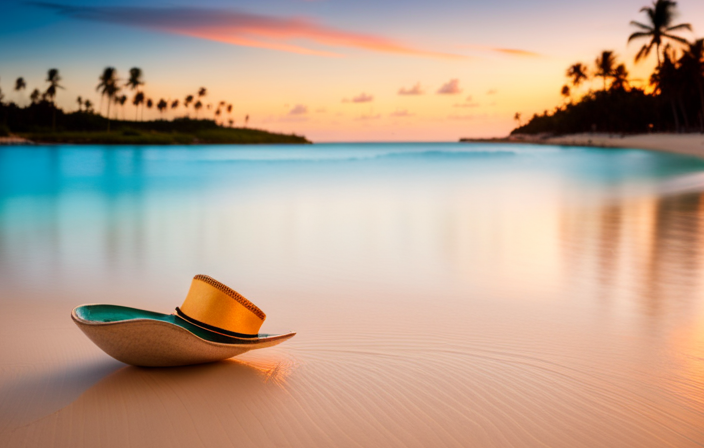
“The early bird gets the worm” is a saying that highlights the importance of booking a cruise to the Bahamas in advance. I strongly believe that timing is crucial, especially if you want to avoid crowds and the hot weather.
That’s why I’m here to share with you the ideal time for a Bahamas cruise, where you can escape the hustle and bustle and enjoy a more relaxed and comfortable experience.
Between November and May, the Bahamas offers a haven for those seeking a break from the peak temperatures and humidity. With fewer crowds and a more peaceful atmosphere, this time frame allows you to truly unwind and soak in the beauty of this tropical paradise.
Plus, if you book your cruise before Thanksgiving in the first two weeks of November, you may even score some better pricing options. So, whether you’re yearning for a family vacation or a romantic getaway, it’s time to set sail and beat the crowds and heat on a Bahamas cruise.
Key Takeaways
- November to May is the ideal time for a Bahamas cruise, as it offers fewer crowds and a more peaceful atmosphere.
- Booking before Thanksgiving in November may provide better pricing for a Bahamas cruise.
- The average high temperature in the Bahamas is 86 degrees, with an average low of 71 degrees.
- Cruising in November to May offers a more comfortable climate compared to July, which has temperatures around 83 degrees.
When to Go
When it comes to deciding when to go on a Bahamas cruise, I always try to choose a time between November and May to beat the crowds and avoid the peak temperatures and humidity.
Cruising during these months has its pros and cons. One of the main advantages is that it falls outside the high demand season, meaning there’s a possibility of fewer crowds. This allows for a more relaxed and enjoyable experience. Additionally, booking before Thanksgiving in the first two weeks of November can often result in better pricing.
On the other hand, the temperatures in the Bahamas during this time are still quite pleasant, with an average high of 86 degrees and an average low of 71 degrees. Compared to the hotter months, such as July, when temperatures reach around 83 degrees, cruising in November-May offers a more comfortable climate.
When choosing the best time for a Bahamas cruise, it’s important to consider personal schedules and preferences. For families, July may be more suitable due to school and extracurricular calendars. Ultimately, the ideal time to go on a Bahamas cruise depends on individual factors and desired experiences.
Weather and Temperatures
While planning my trip, I can’t help but imagine the warm and inviting temperatures of the Bahamas, like a gentle embrace from the sun. The best months for cruising to the Bahamas are from November to May. By avoiding the peak season, I can enjoy the benefits of fewer crowds and more affordable pricing.
The weather during this time is just perfect, with average high temperatures of 86 degrees and average lows of 71 degrees in Nassau. Compared to the heat of July, which reaches 83 degrees, cruising during the cooler months seems much more appealing. Not only will I be able to explore the stunning beaches and crystal-clear waters comfortably, but I’ll also have a chance to experience the Bahamas without the discomfort of high humidity.
Avoiding the peak season truly allows for a more enjoyable and relaxing cruise experience.
Personal Considerations
As I plan my trip to the Bahamas, I must take into account my personal considerations. When it comes to vacation planning, everyone has their own preferences. For me, it’s important to choose a time that aligns with my schedule and allows me to fully enjoy the cruise experience.
While November to May is generally considered the best time to cruise to the Bahamas, I need to consider factors like work commitments and family obligations. July might be a suitable option for me, as it coincides with school holidays and extracurricular calendars, making it easier for the whole family to join. However, I also need to consider the weather.
July temperatures in Nassau are slightly lower than the average high of 86 degrees in November, which means I can still enjoy the sunshine without feeling overwhelmed by the heat. Ultimately, finding the ideal time for a Bahamas cruise requires a balance between personal preferences and practicality.
Frequently Asked Questions
Are there any specific events or festivals in the Bahamas that I should consider when planning a cruise?
When planning a cruise to the Bahamas, it’s worth considering the vibrant festivals and events that take place throughout the year. From the Junkanoo Carnival to the International Film Festival, there’s something for everyone to enjoy and immerse themselves in the rich culture of the Bahamas.
Are there any specific activities or excursions that are highly recommended during a Bahamas cruise?
Top recommended activities during a Bahamas cruise are snorkeling in the crystal-clear waters, exploring the vibrant coral reefs, and swimming with dolphins. Must-try excursions include visiting the stunning Blue Lagoon Island and taking a tour of Nassau’s historic sites.
Can you provide any tips or recommendations for first-time cruisers to the Bahamas?
First time cruisers in the Bahamas: Tips and recommendations! Don’t miss the stunning beaches of Nassau and Freeport. Go snorkeling in the crystal-clear waters and explore the vibrant coral reefs. Visit the famous Blue Lagoon Island for a memorable dolphin encounter!
What are some popular cruise lines that offer Bahamas itineraries?
The best time to visit the Bahamas for a cruise is from November to May. Popular cruise lines offering Bahamas itineraries include Royal Caribbean, Carnival, and Norwegian.
Are there any specific ports in the Bahamas that are known for their beautiful beaches or unique attractions?
There are several ports in the Bahamas known for their beautiful beaches and unique attractions. Some popular ones include Nassau, with its stunning Cable Beach, and Freeport, which offers the unique experience of swimming with pigs on Pig Beach.
Conclusion
In conclusion, the best time to embark on a Bahamas cruise is between November and May, where you can beat the crowds and avoid the intense heat.
With temperatures ranging from 71 to 86 degrees, you’ll enjoy a comfortable and pleasant experience.
By booking your cruise before Thanksgiving, you may even snag better pricing options.
So why wait? Set sail and bask in the beauty of the Bahamas, where paradise awaits.
Don’t let this opportunity pass you by, make your dreams come true on a Bahamas cruise!
Meet Asra, a talented and adventurous writer who infuses her passion for exploration into every word she writes. Asra’s love for storytelling and her insatiable curiosity about the world make her an invaluable asset to the Voyager Info team.
From a young age, Asra was drawn to the power of words and their ability to transport readers to far-off lands and magical realms. Her fascination with travel and cultures from around the globe fueled her desire to become a travel writer, and she set out on a journey to turn her dreams into reality.
Cruise Destinations
Exploring The Charms Of Bimini, Bahamas: Adventure, Views, And Local Delights!
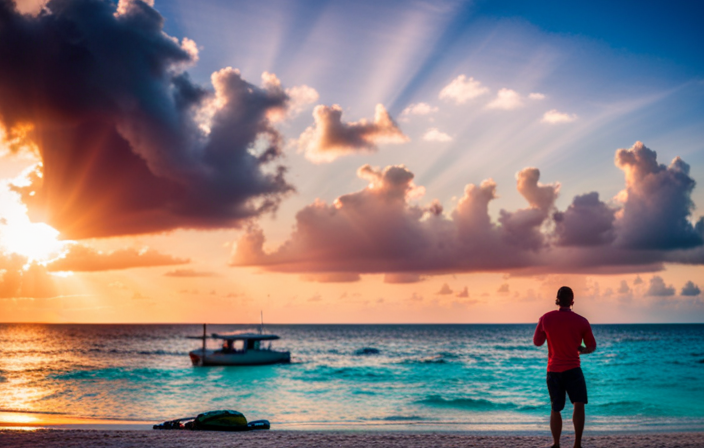
Located on the beautiful white sandy beaches of Bimini, Bahamas, I felt a strong sense of curiosity. The transparent turquoise waters stretched out in front of me, tempting me to plunge in and discover the colorful marine life that dwells below.
The warm sun kissed my skin, and the gentle breeze whispered tales of hidden treasures waiting to be discovered. Bimini is a paradise for those seeking thrilling experiences, breathtaking views, and mouthwatering local delights.
From renting kayaks to sipping cocktails with panoramic views, there is no shortage of things to do and see in this tropical haven. Whether you’re visiting popular bars like Big Johns or indulging in the rustic charm of Island House, Bimini offers an array of experiences that will leave you wanting more.
So pack your bags, grab your sense of adventure, and let’s dive into the charms of Bimini, Bahamas!
Key Takeaways
- Bimini, Bahamas offers pristine white sand beaches and crystal-clear turquoise waters.
- The destination is known for its vibrant marine life and sense of adventure.
- Travelers can enjoy activities such as renting kayaks to explore secluded coves and beaches, and sipping cocktails with panoramic views.
- Local cuisine in Bimini includes fresh seafood, conch salad, cracked conch, and coconut shrimp.
Places to Visit
https://www.youtube.com/watch?v=C4F38dOJ9bc
I can’t wait to explore the places to visit in Bimini, Bahamas. There are so many things to do, like renting kayaks and enjoying cocktails with beautiful views. You can also visit popular spots like Big Johns Bar and Grill and Bimini Seafood and Conch Bar. But beyond these well-known attractions, Bimini has some hidden gems waiting to be discovered.
One of the best ways to explore the island’s natural beauty is through water activities. Renting kayaks allows you to navigate the crystal-clear waters and discover secluded coves and pristine beaches. As you paddle along, you’ll be mesmerized by the vibrant marine life swimming beneath you.
And after a day of adventure, treat yourself to a refreshing cocktail while taking in the breathtaking views of the Bahamian sunset. Bimini is truly a paradise for those seeking both adventure and relaxation.
Tips for Traveling
When traveling to Bimini, Bahamas, it’s important to check the opening times of establishments and bring cash as some places don’t accept credit cards.
Additionally, there are a few packing essentials you should consider for your trip. As Bimini is known for its beautiful beaches and outdoor activities, make sure to pack sunscreen, a hat, and comfortable walking shoes. Don’t forget your swimsuit and beach towel, as you’ll definitely want to take a dip in the crystal-clear waters.
Now, let’s talk about the local cuisine in Bimini. Seafood lovers will be in paradise here, with fresh catches of the day being a staple on many menus. Be sure to try the conch salad, a local delicacy, and indulge in some delicious Bahamian cuisine like cracked conch and coconut shrimp. Your taste buds will thank you for it!
About Asra
Asra, a passionate traveler and cruising enthusiast, is known for sharing valuable tips and information about cruising with fellow Canadians, as well as teaching business studies with a focus on strategy.
With her extensive knowledge and experience, she has become a trusted source for those looking to plan the perfect cruise vacation. Asra’s expertise in teaching business studies allows her to offer unique insights into the strategic aspects of the cruising industry, giving her students a comprehensive understanding of the business side of travel.
Her dedication to sharing cruising tips and information not only enhances the travel experiences of her fellow Canadians but also inspires others to embark on their own adventures. Asra’s passion for travel and cruising shines through in her engaging and informative approach, making her a sought-after resource in the world of travel.
Frequently Asked Questions
What are some popular water activities to do in Bimini, Bahamas?
I dove into the crystal-clear waters of Bimini, Bahamas, immersing myself in a vibrant underwater world. Snorkeling among colorful coral reefs and swimming with tropical fish was an unforgettable experience. And for fishing enthusiasts, Bimini offers thrilling deep-sea fishing adventures.
Are there any historical sites or landmarks to visit in Bimini?
Bimini, Bahamas offers a rich historical heritage to explore. Famous shipwrecks like the SS Sapona and the Hesperus are popular among divers. Bimini’s history, including its connection to Ernest Hemingway, has greatly influenced its vibrant cultural heritage.
Can you recommend any local restaurants or food specialties in Bimini?
Sure! When visiting Bimini, Bahamas, don’t miss out on the local culinary delights. Some must-try dishes include fresh catches of seafood and traditional flavors. Explore hidden gems like local restaurants offering delicious seafood specialties.
Are there any festivals or events that take place in Bimini throughout the year?
Bimini’s annual festivals and events are a vibrant celebration of music and cultural festivities. From the Bimini Blues and BBQ Festival to the Annual Junkanoo Parade, there’s always something exciting happening on this beautiful island.
What is the best way to get around the island of Bimini?
The best transportation option for getting around the island of Bimini is renting a golf cart. It’s a fun and convenient way to explore the island and take in the beautiful views.
Conclusion
As I conclude my exploration of the charming paradise that is Bimini, Bahamas, I’m left in awe of the adventure, breathtaking views, and local delights that await.
From kayaking through crystal-clear waters to sipping cocktails while basking in the beauty of the island, every moment is a sensory delight.
The lively bars and grills, like Big Johns, offer a taste of the vibrant local scene, while the rustic charm of Island House beckons you to unwind.
Don’t forget to indulge in the fresh seafood at Bimini Seafood and Conch Bar, where the patio invites you to savor the flavors of the sea.
With Asra’s expert tips guiding the way, this trip promises to be an unforgettable experience.
So pack your bags, embrace the adventure, and let Bimini’s enchantment wash over you like the gentle waves of the Caribbean.
Bon voyage!
Meet Asra, a talented and adventurous writer who infuses her passion for exploration into every word she writes. Asra’s love for storytelling and her insatiable curiosity about the world make her an invaluable asset to the Voyager Info team.
From a young age, Asra was drawn to the power of words and their ability to transport readers to far-off lands and magical realms. Her fascination with travel and cultures from around the globe fueled her desire to become a travel writer, and she set out on a journey to turn her dreams into reality.
-

 Cruise FAQs3 days ago
Cruise FAQs3 days agoHow To Turn On Cruise Control Tesla Model 3
-

 Cruise FAQs3 months ago
Cruise FAQs3 months agoWhat Is The Weather Like On A Transatlantic Cruise In April
-

 Cruise FAQs3 days ago
Cruise FAQs3 days agoHow To Set Cruise Control Tesla Model Y
-
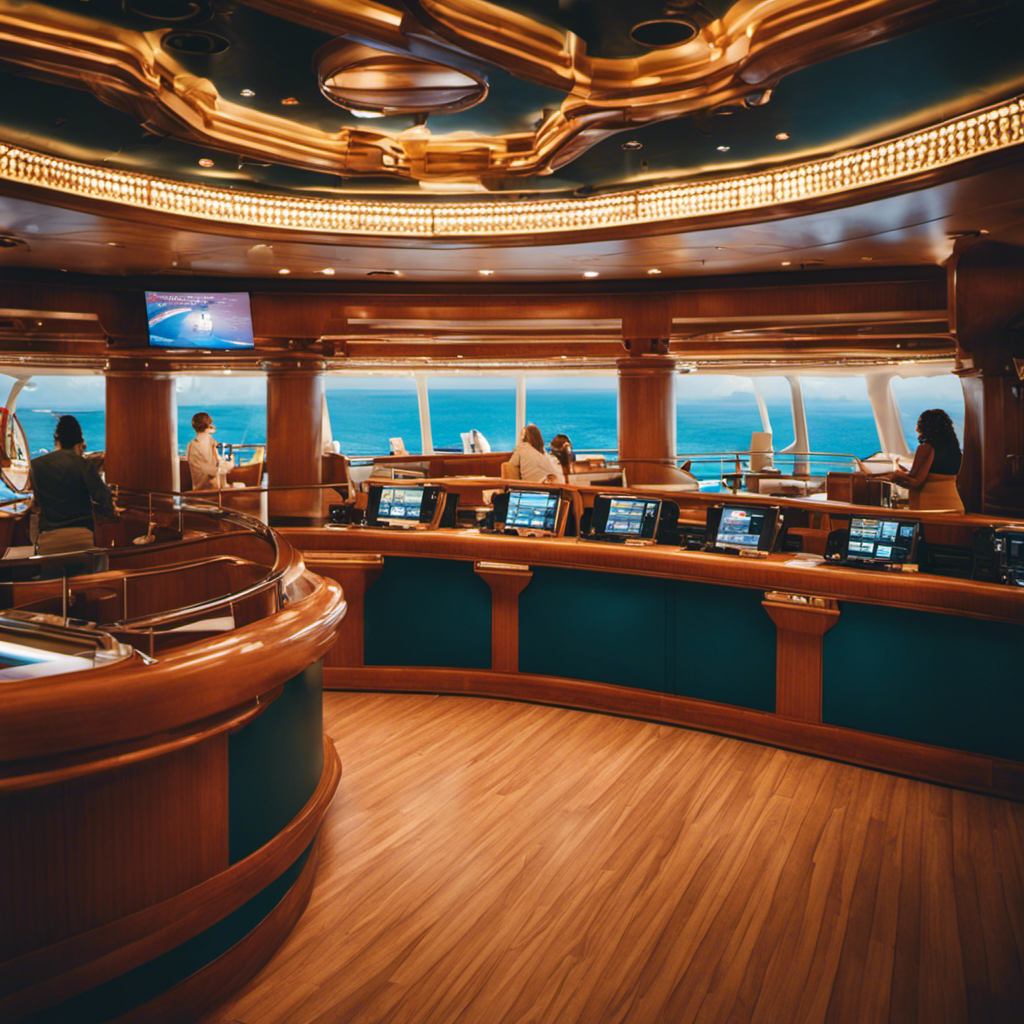
 Cruise FAQs3 months ago
Cruise FAQs3 months agoHow to Contact Someone on a Carnival Cruise Ship
-
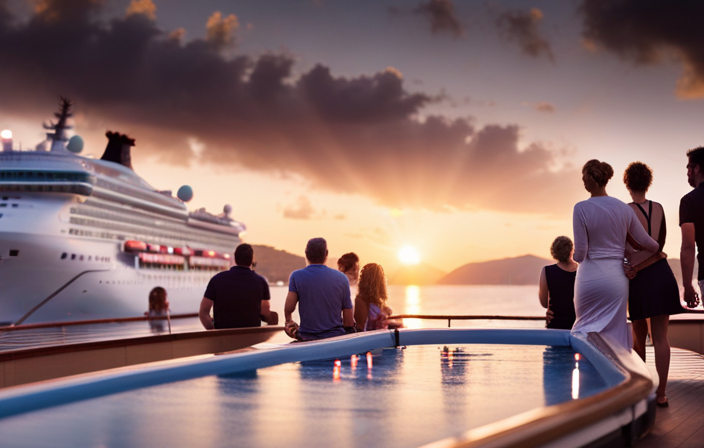
 Cruise Lines3 months ago
Cruise Lines3 months agoWhat Is The Average Age Of Passengers By Cruise Line
-
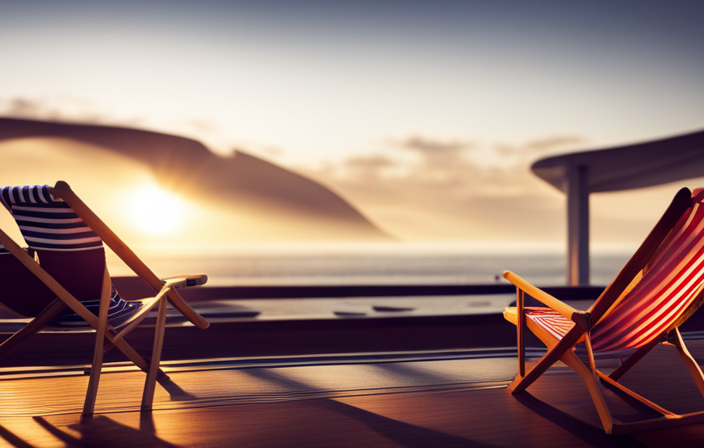
 Onboard Experience1 week ago
Onboard Experience1 week agoFinding Deals On Unsold Cruise Cabins: Tips And Strategies
-
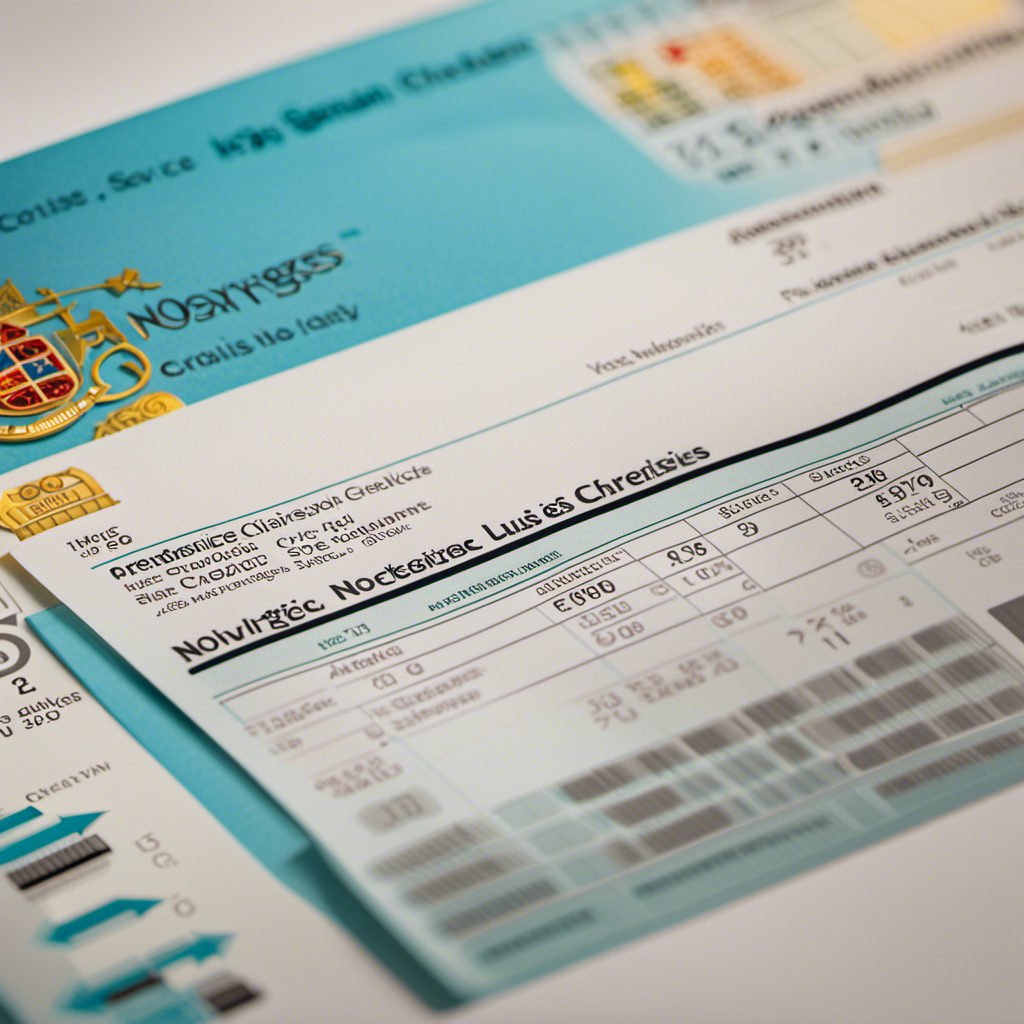
 Cruise Lines3 months ago
Cruise Lines3 months agoDecoding Norwegian Cruise Line’s Gratuities and Service Charges
-
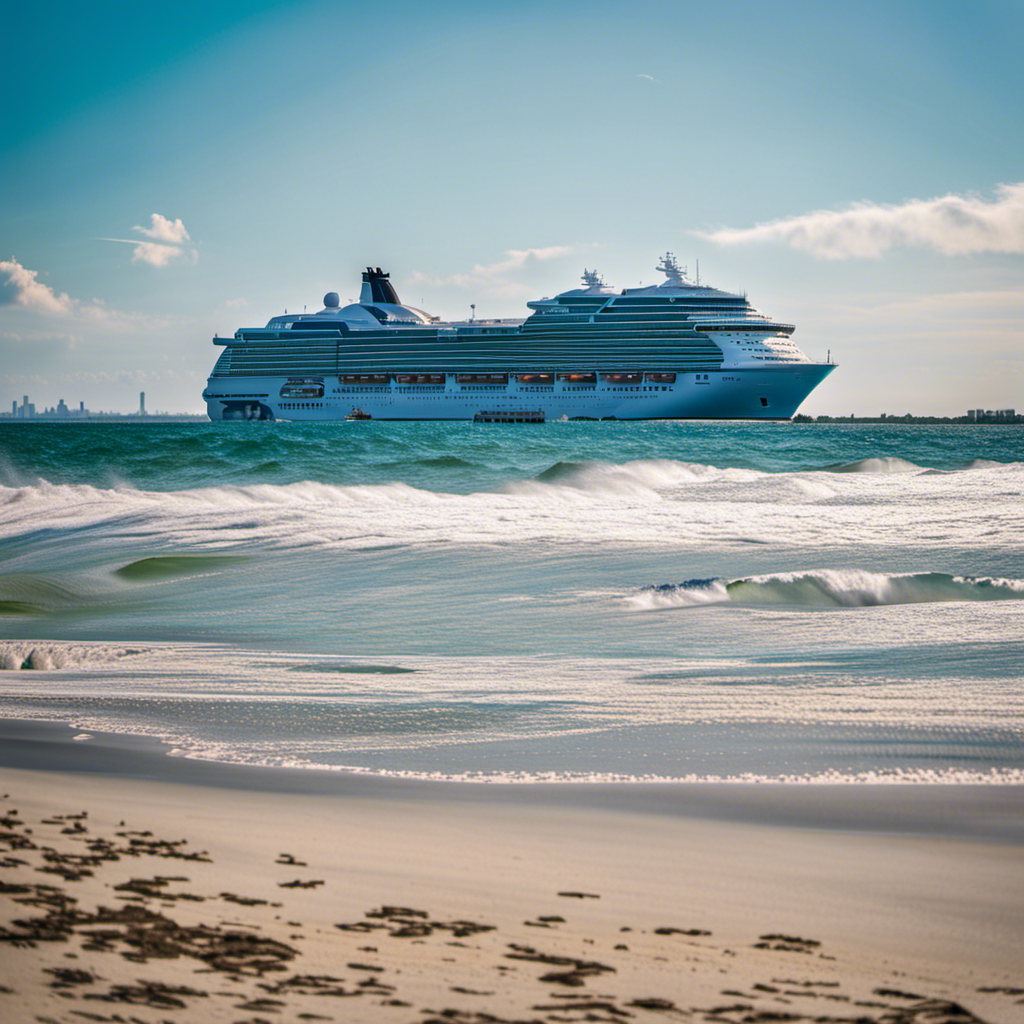
 Cruise Lines3 months ago
Cruise Lines3 months agoWhat Cruise Lines Depart From North Carolina



